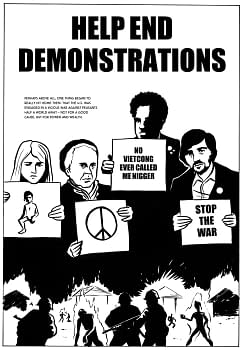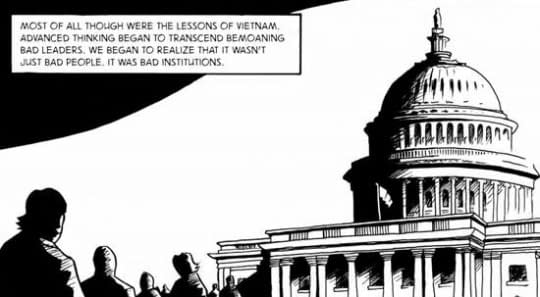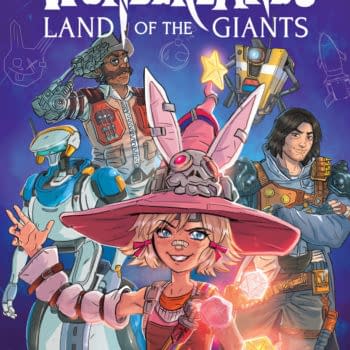Posted in: Comics | Tagged:
When Participating Economics Becomes A Comic
Sean Wilson writes;
It was around Christmas 2010 that I first had the idea to do a comic book about the issues covered in Parecomic – anarchism, socialism, and left-wing activism since the 1960s. (The name was a bit of a joke—taking the term "participatory economics" and merging it with "comic"—but after using it for a while, the joke stuck.) I've been interested in politics since I was 16, and even at that early age I thought (or felt, at least) that there was something fundamentally wrong with the capitalist system. I studied sociology and psychology at university in Scotland and learned more about the theory behind various interesting aspects of society. But I've loved comic books since I was a child, as was normal then in the U.K. and the U.S., and it seemed obvious to me to combine the two and make comic books about social issues.

I suggested the idea of Parecomic to Michael Albert soon after it occurred to me, and he emailed back right away with a positive attitude. I've been very impressed that someone with so much experience in left-wing activism is so open to working with younger people on new ideas. That's the way it should be, of course, but many people with that kind of influence and expertise are not open to moving in new directions. Also, for someone so busy with various types of organizing he put a lot of work into Parecomic. We must have shared around 1,000 emails over the process of making the book, with him checking details, theories, times, names, and so forth, and giving me his opinion on how something might be done. But Michael always stressed that this was my script and our (Carl Thompson, the illustrator, and mine) take on the story and issues; he never insisted on doing something his way. Considering that this is a book about his life, that is also an admirably flexible and respectful position.
It is also an honor to have Michael's MIT teacher and colleague, Noam Chomsky, featured in the book and to have his introduction to Parecomic, his first association with a comic book. Obviously, Chomsky is a big influence on me. I've learned a lot from his books and lectures—in fact, the only thing about Chomsky I can complain about is that in lectures he routinely calls the whole of the U.K. just "England," which, as a Scot, is very jarring! Both Noam and Michael are inspirational figures in several ways—their erudition, their commitment to political activism, and their determination to pursue their own path despite large resistance.
Parecomic tries to show some of these aspects in an engaging visual form, with specific situations but tied to the wider issues. I was interested in finding out more about anarchism, and one good way of doing that is to write a book about it. In that aim I've definitely succeeded, as I know a large amount more about this theory than I did in Christmas 2010. Carl Thompson's art for Parecomic is perhaps more pared down than he might have liked, had he more time. It was his first long book and quite a task to take on at 200 detailed, text-heavy pages, so he had to work out a more basic art style to get all this done on time. But, reading through the finished book, I find that he exactly captures the expressions and body movements needed for that panel's purpose just about every time, which is very impressive. I hope you will learn something from Parecomic to help in your future activism!












